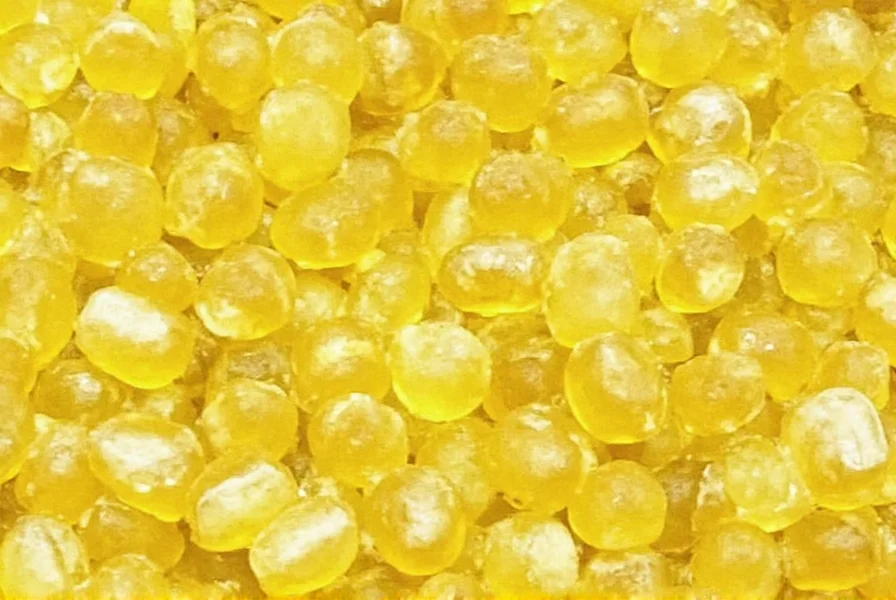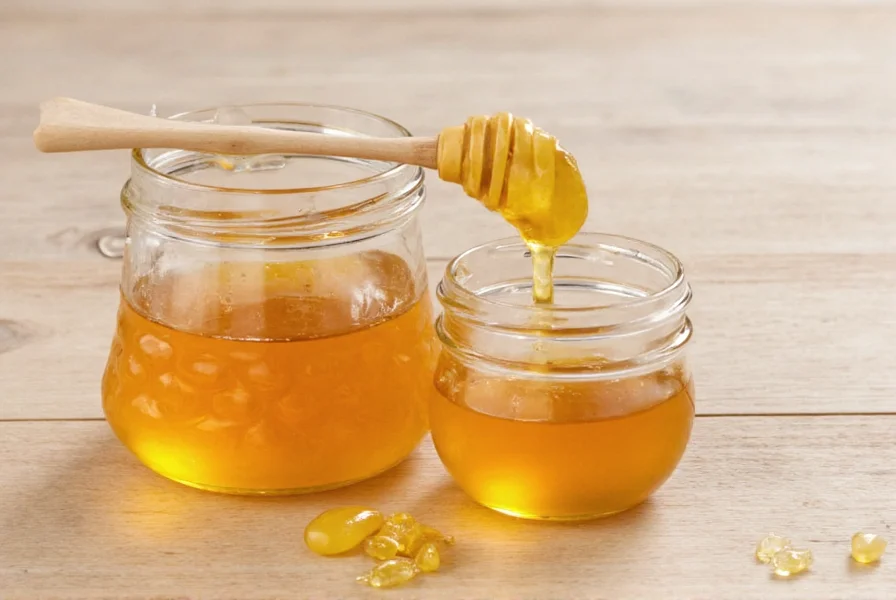Hachimitsu clover, known as hachimitsu sh clover in Japanese agricultural circles, represents a specialized cultivar of white clover selectively bred for optimal nectar production in Japan's climate conditions. Unlike standard white clover varieties, hachimitsu clover demonstrates enhanced flowering periods and higher sugar concentration in its nectar, making it particularly valuable for artisanal honey producers seeking distinctive flavor profiles.
Botanical Characteristics of Hachimitsu Clover
This clover variety belongs to the Fabaceae family and shares the typical trifoliate leaf structure of Trifolium species. What distinguishes hachimitsu clover are its slightly larger flower heads containing more individual florets compared to conventional white clover. The plant typically reaches 6-8 inches in height with a spreading growth habit that creates dense ground cover. Its root system features nitrogen-fixing nodules that improve soil fertility, making it valuable for crop rotation systems.
| Characteristic | Hachimitsu Clover | Standard White Clover |
|---|---|---|
| Flower Size | 25-30% larger | Standard size |
| Nectar Sugar Content | 22-25% | 18-20% |
| Primary Growing Regions | Hokkaido, Tohoku | Worldwide |
| Honey Yield per Acre | 400-500 lbs | 300-400 lbs |
Origin and Development History
Hachimitsu clover emerged from selective breeding programs in northern Japan during the early 2000s. Agricultural researchers at Hokkaido University identified specific white clover specimens that demonstrated superior nectar production under Japan's unique climate conditions. Through careful selection over multiple generations, they developed the hachimitsu variety specifically optimized for Japanese honey production. The name hachimitsu, meaning honey in Japanese, directly references its primary agricultural purpose.
Unlike many commercial clover varieties developed for livestock forage, hachimitsu clover prioritizes floral characteristics that benefit honeybees. Its development represents a fascinating example of crop specialization for apicultural rather than agricultural purposes. Japanese beekeepers report that hachimitsu clover honey commands premium prices due to its distinctive flavor profile that reflects regional terroir.

Growing Requirements and Cultivation Practices
Successful hachimitsu clover cultivation requires specific conditions that differ slightly from standard white clover. The plant thrives in USDA hardiness zones 4-8 with particular success in Japan's cooler northern regions. It prefers well-drained loamy soils with pH between 6.0-7.0 and requires consistent moisture without waterlogging.
Planting typically occurs in early spring or fall when temperatures range between 50-75°F (10-24°C). Seed rates of 2-3 pounds per acre produce optimal stand density for honey production. Unlike forage-focused clovers, hachimitsu clover benefits from reduced nitrogen fertilization, as excessive nitrogen can decrease nectar sugar concentration. Japanese farmers often interplant hachimitsu clover with other bee-friendly flowers to extend the nectar flow period.
Honey Production Characteristics
Hachimitsu clover honey represents a specialty product in Japanese markets, distinguished by several notable qualities:
- Color: Extra light amber, almost water-white when freshly extracted
- Flavor Profile: Delicate floral notes with subtle sweetness and minimal aftertaste
- Crystallization: Slower crystallization than standard clover honey due to higher fructose content
- Moisture Content: Typically 17-18%, contributing to longer shelf stability
The distinctive characteristics of hachimitsu clover honey stem directly from the plant's specialized nectar composition. Japanese apiarists note that honeybees working hachimitsu clover fields produce honey with more complex aromatic compounds compared to standard white clover honey. This complexity makes hachimitsu clover honey particularly valued for pairing with delicate Japanese cuisine and traditional tea ceremonies.
Comparison with Other Clover Varieties
While all clovers contribute to honey production, hachimitsu clover offers specific advantages for Japanese apiculture:
- vs Standard White Clover: Hachimitsu produces 20-25% more nectar with higher sugar concentration, resulting in increased honey yields per acre
- vs Crimson Clover: While crimson clover blooms earlier, hachimitsu offers longer flowering period better aligned with Japanese honey flow seasons
- vs Alsike Clover: Hachimitsu produces lighter colored honey with more delicate flavor compared to alsike's stronger taste
Understanding these differences helps beekeepers make informed decisions about which clover varieties to plant near apiaries. For those specifically targeting premium honey markets, hachimitsu clover represents a strategic choice that aligns with Japanese consumer preferences for light, delicate honeys.
Challenges in Hachimitsu Clover Cultivation
Despite its advantages, hachimitsu clover presents several cultivation challenges that prospective growers should consider. The variety demonstrates slightly lower cold tolerance than standard white clover, making it less suitable for Japan's most northern regions without protective measures. It also requires more consistent moisture during flowering periods, which can be problematic during dry summers.
Pest management presents another consideration, as hachimitsu clover appears somewhat more susceptible to aphid infestations than conventional varieties. Japanese agricultural extension services recommend integrated pest management approaches rather than chemical controls to maintain the purity required for premium honey production. Additionally, the specialized nature of hachimitsu clover means seed availability remains limited compared to mainstream clover varieties.
Future Prospects for Hachimitsu Clover
As consumer interest in regionally distinctive honeys continues growing, hachimitsu clover represents an increasingly valuable crop for Japanese farmers and beekeepers. Research programs continue refining cultivation techniques to improve yield consistency while maintaining the distinctive qualities that make this honey special. Some agricultural scientists are exploring controlled environment cultivation methods that could extend hachimitsu clover's growing season and potentially make it viable in additional regions.
For those interested in sustainable agriculture and specialty honey production, understanding hachimitsu clover's unique characteristics provides valuable insights into the relationship between specific plant varieties and the resulting honey profiles. As the market for terroir-specific honeys expands globally, knowledge of specialized varieties like hachimitsu clover becomes increasingly relevant for both producers and discerning consumers.
Frequently Asked Questions
What makes hachimitsu clover different from regular white clover?
Hachimitsu clover is a specialized Japanese cultivar of white clover bred specifically for honey production. It features larger flower heads with 25-30% more florets, higher nectar sugar content (22-25% compared to 18-20%), and produces honey with a lighter color and more delicate flavor profile than standard white clover.
Where does hachimitsu clover grow best?
Hachimitsu clover grows best in Japan's northern regions, particularly Hokkaido and Tohoku, in USDA hardiness zones 4-8. It prefers well-drained loamy soils with pH between 6.0-7.0 and consistent moisture without waterlogging. The plant thrives in temperatures between 50-75°F (10-24°C) during its growing season.
How does hachimitsu clover honey taste compared to other clover honeys?
Hachimitsu clover honey has a distinctive flavor profile characterized by extra light amber color (almost water-white when fresh), delicate floral notes, subtle sweetness with minimal aftertaste, and slower crystallization due to higher fructose content. Compared to standard white clover honey, it offers more complex aromatic compounds and a more refined flavor that pairs well with delicate Japanese cuisine.
Can hachimitsu clover be grown outside Japan?
While hachimitsu clover can potentially be grown in regions with similar climate conditions to northern Japan (USDA zones 4-8 with cool summers), its specialized breeding for Japanese conditions means it may not perform as well elsewhere. Growers outside Japan would need to carefully match soil conditions, moisture levels, and temperature ranges. Limited seed availability outside Japan also presents a challenge for international cultivation.











 浙公网安备
33010002000092号
浙公网安备
33010002000092号 浙B2-20120091-4
浙B2-20120091-4